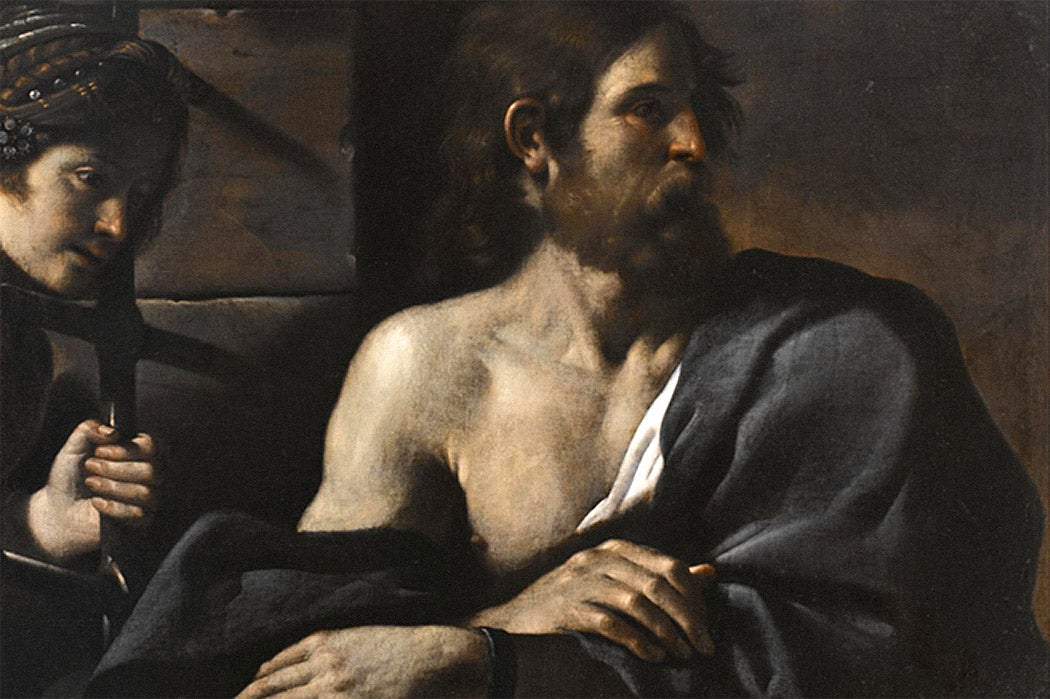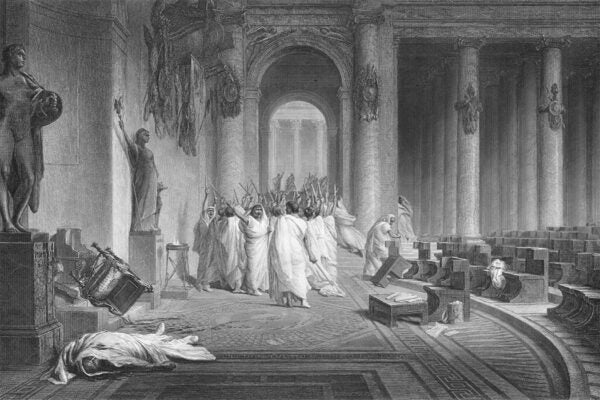Sometime between the years 1624 to 1626, Italian artist Giovanni Francesco Barbieri, known better as Guercino (1591–1666), put oil-and-brush to canvas to create Saint John the Baptist Visited in Prison by Salome. John the Baptist, his head turned determinedly away from Salome, seems unimpressed with his visitor. Some might say he looks outright offended as the princess pokes her head through the bars of the cell.
Salome’s curious gaze and shadowy, youthful features suggest a more ambiguous story. Is she entreating John the Baptist to renounce his one-man campaign against her mother, for which he was imprisoned? Or is she mocking his wretched state, brought upon him by his own arrogance in daring to question the actions of the royal family, to which she belongs? Or—and the nineteenth-century avant-garde would approve of this interpretation—is she soliciting him sexually, as a naïve young woman in love? It’s left to the viewer to decide.
What’s certain is that this encounter never appears in the Christian Bible, the source material for Guercino’s painting. It’s an imagined scene, somewhat like fanfiction, borrowing two established characters to create an alternative plotline that strays from the original text. Canonically, Salome and John the Baptist never interacted with each other. In the New Testament’s Gospel of Mark, as described by Jennifer Lassley Knight, Saint John the Baptist is arrested for denouncing the marriage of King Herod and Queen Herodias as incestuous, as Herodias had once been married to Herod’s half-brother. At Herod’s birthday banquet, Herodias’s daughter, Salome, performs an enticing dance for her stepfather’s pleasure. When Herod offers her a reward for her dance, Salome, at her mother’s behest, asks for John’s decapitated head, presented on a platter.
In the Bible, Salome is a flat, two-dimensional figure, merely doing another’s bidding, but writers and artists have frequently attempted to fill in her character—and flesh out her body. Guercino wasn’t the only or the last artist to depict Salome as interested in John the Baptist, independent of her mother’s spite. In 1891, the Irish-born symbolist writer Oscar Wilde penned the one-act play Salome, which depicts her as a narcissistic psychopath who demands John’s head in retaliation for his rejection of her sexual advances (her mother’s slandered honor is low on her list of priorities). Wilde scholar Jess Sully describes his Salome’s lustful and deadly obsession as “a warped, corrupted version of true love in the Biblical tradition.”
Wilde’s casting of Salome as a sexualized figure was nothing new. In fact, as Christiane Klapisch-Zuber and Susan Emanuel point out, representations of her as a seductress go back to at least the twelfth century, when she was depicted with an arched, impossibly contorted body.
“Since exaggeration of movement in dancing was seen to betray its socially and morally reprehensible character, this is the way in which many artists tried to suggest the sinister aspects of Salome’s story and character,” they note.
Weekly Newsletter
What offended audiences and critics in Wilde’s day was the idea that Salome possessed autonomous sexual desire and a will of her own. As in Guercino’s painting, Salome disturbs because the artist assigns to her a position of power over a man. She gazes upon and covets John’s head as a prize, and she gets it.
The dynamic between the mysterious princess and the man she murdered with a dance has shades of a dark, morbid romance that invites artists to explore further. Guercino’s speculative take on events hangs in the National Gallery of Ireland in Dublin, where visitors, like the immortalized Salome, are free to observe the gaunt yet holy form of Saint John the Baptist at will.







